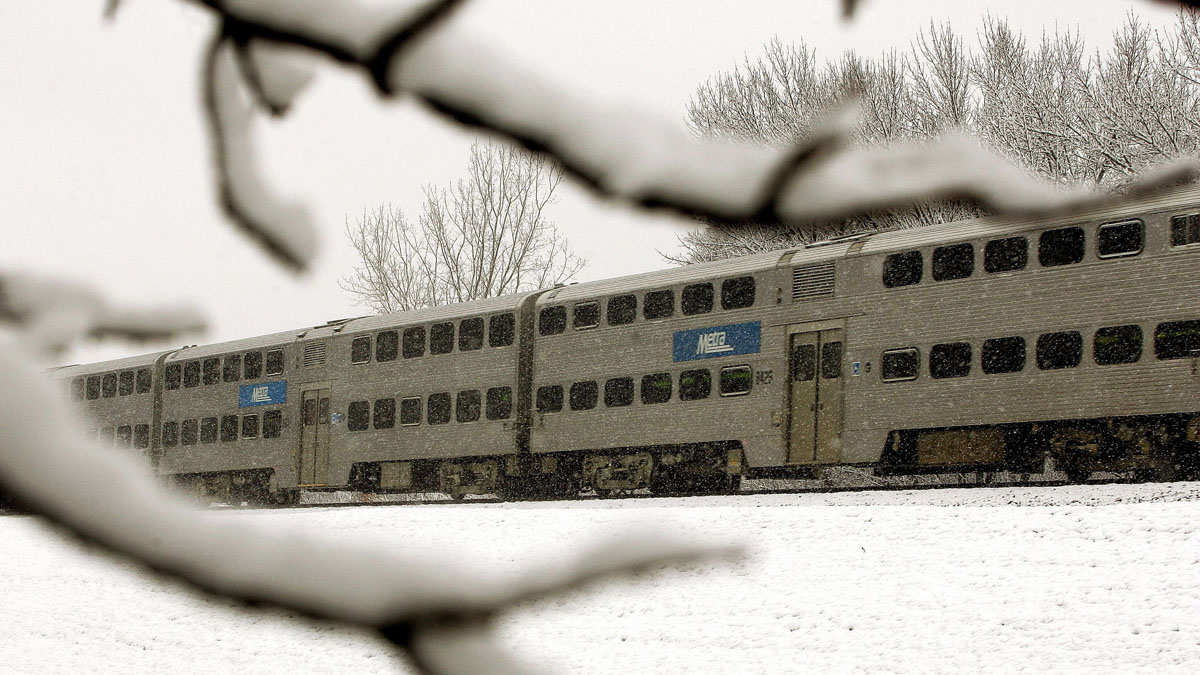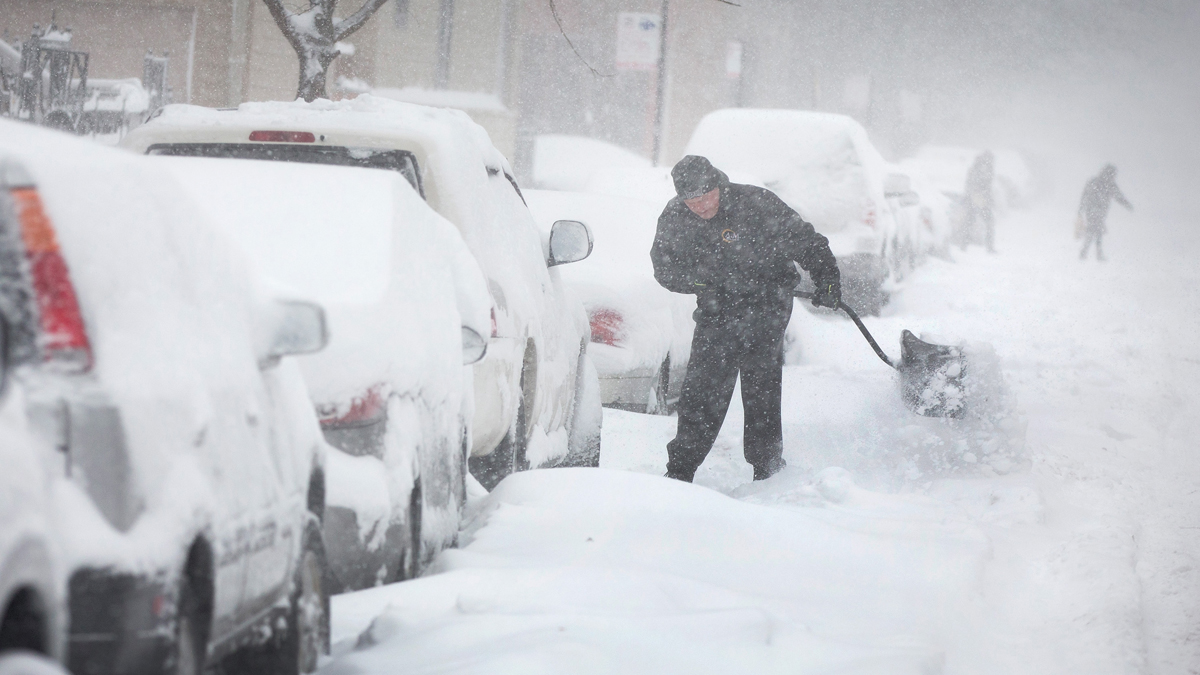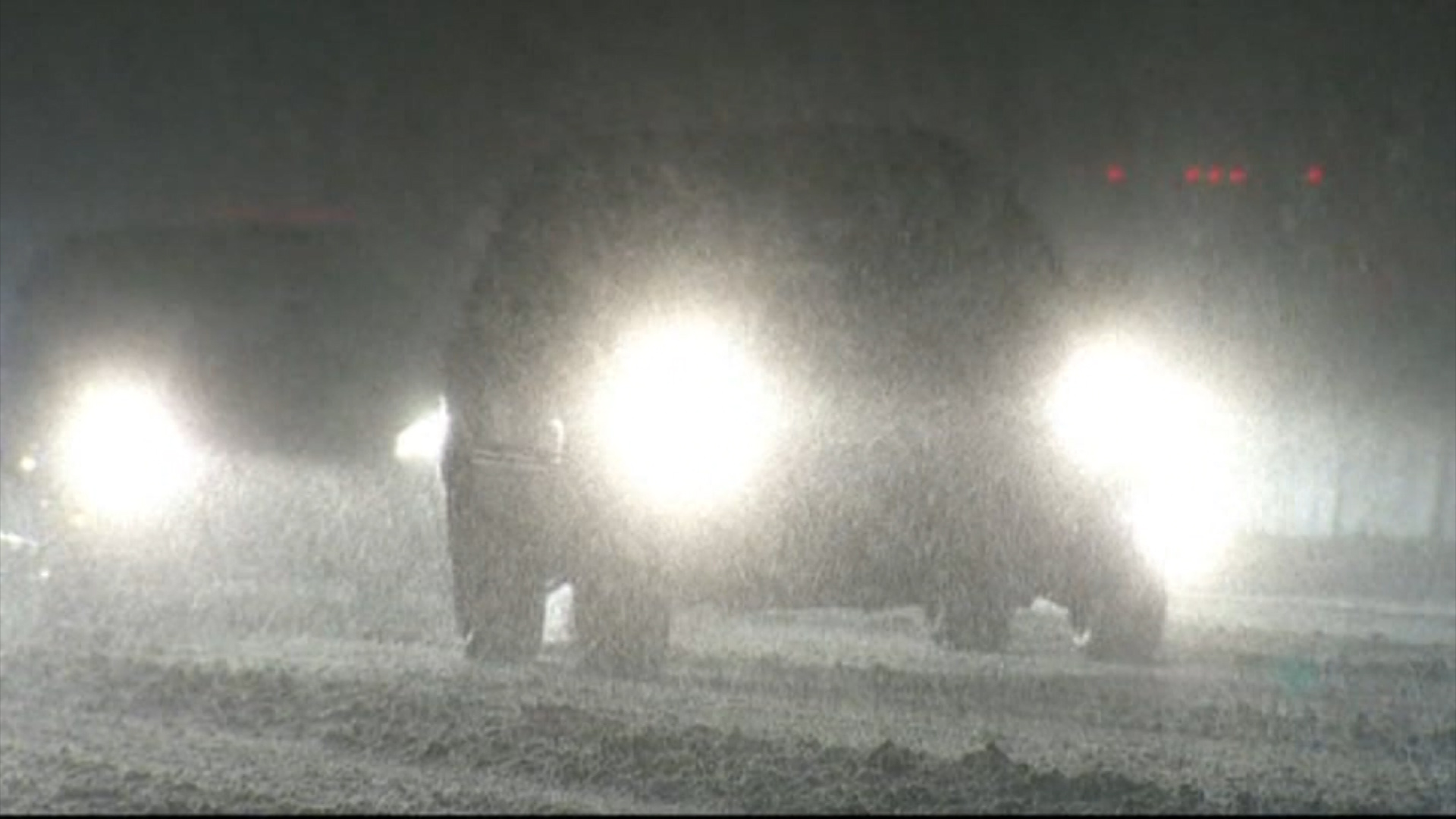Officials are urging drivers to stay off the roads in Illinois as a winter system makes its way through, but when will be the worst times for travel?
While timing of the storm's intensity has fluctuated over the last few days, as of Wednesday afternoon, NBC 5 Storm Team Meteorologist Paul Deanno said the worst of the storm is expected to hit between 8 p.m. Thursday and 12 p.m. Friday, though some locations could see "rapidly deteriorating" travel conditions much earlier in the afternoon.
The National Weather Service predicts some suburbs northwest, west and southwest of Chicago could see the onset of the wintry system late Thursday morning, with road conditions and visibility quickly becoming dangerous.
During that period, the snow will likely become moderate to heavy at times, paired with wind gusts of up to 55 mph and visibility near zero. Not to mention wind chills of up to -35 degrees.
"Even when the snow stops, winds will still be strong," Deanno said. "So snow will be blowing around all over the place, making it look like it’s still snowing."
"Exposed north-south roads will be most susceptible to being drifted over with snow," the NWS tweeted as well.
In a message Wednesday afternoon, Illinois State Police asked the public to "stay off the roadways for the next couple of days during the severe winter weather expected to begin [Thursday]."
"If travel is absolutely necessary, allow enough time for travel and remain focused on the hazardous road conditions. Slow down AND move over for those vehicles stranded on the side of the road and for those emergency vehicles and personnel assisting them," the message read.
The message comes as forecasters predict "white out" conditions, "zero visibility" and nearly impossible travel conditions in the days leading up to the Christmas holiday.
Feeling out of the loop? We'll catch you up on the Chicago news you need to know. Sign up for the weekly Chicago Catch-Up newsletter here.
Some snow is expected to develop starting Wednesday evening across northwest Illinois. The real system, however, will begin Thursday morning in the western portion of the area first, shifting east toward the city by the early afternoon.
While it was expected that the storm wouldn't intensify until later Thursday, travel conditions are now expected to "rapidly deteriorate" by the evening rush hour.
Blizzard conditions are possible Thursday afternoon and into Friday morning, according to the National Weather Service, with "brutal" travel conditions anticipated.
The National Weather Service is warning travelers and motorists -- whether they're taking trip out of town or just down the road -- that travel conditions during the height of the storm could be potentially "life-threatening."
A winter storm warning will begin at 9 a.m. Thursday in McHenry, DeKalb, Kane, LaSalle, Kendall and Grundy counties, according to the National Weather Service. The warning will take effect in Lake, DuPage, Kankakee, Cook and Will counties in Illinois at noon and in Lake, Newton and Jasper counties in northwest Indiana starting at 3 p.m. CT.
It will remain in effect across the area until 6 a.m. Saturday.
The storm comes amid one of the busiest travel times of the year. According to AAA, 113 million Americans -- 5.8 million in Illinois -- are expected to travel 50 miles or more between Dec. 23 and Jan. 2. Wednesday and Thursday alone, the Illinois Tollway estimating that 1.7 million vehicles are expected to use the tollway system.
The Illinois Tollway said it plans to have increased staffing on hand for the storm.
“Our top priority during this storm will be keeping our customers safe by operating our plows around the clock to rapidly remove snow and ice from our roads and by quickly responding to any drivers whose vehicles become disabled on our system during this severe weather,” Illinois Tollway Executive Director Cassaundra Rouse said in a statement. “Our customers can help us keep them safe by slowing down, allowing extra time to reach their destinations and by giving our snowplows the extra room they need to keep the roads clear.”





